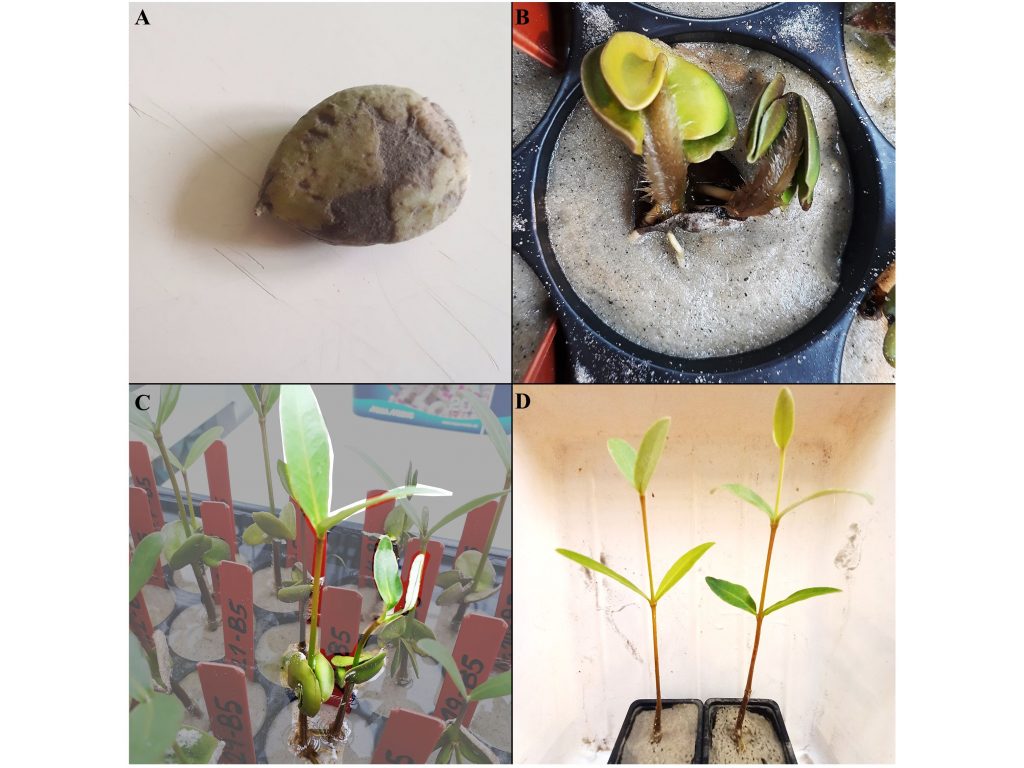NESSC discovery: Twins for black mangroves
NESSC-researchers at Wageningen University have discovered that black mangrove trees can produce twins. While the phenomenon of twin seedlings was seen before in other mangrove species, this is likely the very first time it was observed in black mangrove trees.

In the tropical plant nursery in Wageningen several NESSC-researchers work on growing mangrove trees and tropical seagrasses. In this way, they study the interactions between tropical habitats increasingly affected by climate change and climate-driven anthropogenic pressures. While germinating several black mangroves seeds, NESSC scientists Sara Pino Cobacho and Marjolijn Christianen noticed an extremely rare phenomenon: single mangrove seeds that produced multiple seedlings – or twins!
The phenomenon of twin seedlings in mangrove species has only been observed a few previous times. In this case, it is highly likely the very first time observed in black mangroves. In a short communication, published past summer in the academic journal Botanica Marina, Sara and her colleagues at Wageningen and Burger’s Zoo describe and visually report this notable finding.

Quicker adaptation
Mangrove species play a key role in tropical regions by preventing coastal erosion and providing a habitat for hundreds of different plants and animals, as well as human populations. Because of their important functions, NESSC researchers study the impacts of climate change on mangrove trees.
In their new publication, the scientists hypothesize that the ability of mangrove trees to produce twins might give them an evolutionary advantage under a changing climate because they can adapt their reproductive strategies.
Article:
First evidence of polyembryony in black mangrove Avicennia germinans
Botanica Marina, 65(5), 321–324, 2022.
Sara Pino Cobacho, Nicole A.L.M. Grol, Thomas A. Dros, Dorine T.B.M. Dekkers and Marjolijn J.A. Christianen
https://doi.org/10.1515/bot-2022-0006

